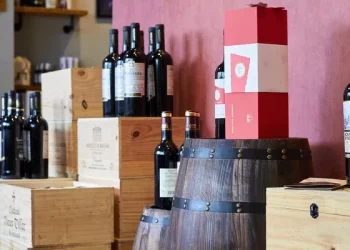Regular wine buyers may have noticed that when you buy a wine, there are always scores and comments in the description, including a description of when it is ready to drink.
These ratings come from professional magazines or wine critics.
However, some professional sommeliers may recommend a wine with 85 points over a wine with 90 points.
Consumers may be confused.
The score can be used as a reference for wine selection, but before reference, you should have a deeper understanding of the score.
Most wine critics and professional magazines use a 100-point rating system.
A wine, as long as it’s a wine, it has a base score of 50 points.
A wine score is an assessment of four aspects of a wine: appearance (color), aroma, taste (texture and structure), and overall reputation.
Therefore, no matter what aspect of wine rating, it is actually a subjective judgment of the rater.
While some reputable wine critics can be relatively reliable, in general, reputable wine critics specialize in their regions, while ratings for wines from other regions may be less reliable.
Parker’s high scores, for example, always go to fruity, high-alcohol, very serious wines.
In addition, wine critics already know basic information about wines before they taste them, although sometimes they taste wines blind, not knowing the producer’s information before scoring them.
Usually, different wine critic will tit for tat, but they both areas are not classic such as five fine bordeaux wines, if a wine critic gave a arnaud (Albarino) wine hit 87 points, this means that he does not do and his past experience, it and other evaluation of this wine wine critic.
With these variables, the 100-point scale is not an absolute reference.
If you want to use the scores of wine critics as a reference, you can slowly explore and choose wine critics who have similar tastes to you and choose wines according to their recommendations.
Of course, just because a wine hasn’t been reviewed by a wine critic or given a score on a supermarket shelf doesn’t mean it’s not good.
Some wines do not participate in the rating, and some retailers do not have the wine rating information, in this case, can look up the relevant wine information online.
As for the easiest way to make sense of a 100-point scale, Wine Spector’s professional sommelier offers this description: Wines under 80 are usually defective;
A score of 80-84 means “not bad, I would drink it if it was available, but I wouldn’t go looking for it.”
;
A wine score of 85-89 says, “Well, this is really good!”
;
A score of 90-94 is “Excellent quality, I want to know more about this wine.”
;
A wine with a score of 95-100 needs to be described as “classic”. It represents the style of that type of wine, is the model of that type of wine, and is a wine that will be enjoyed many years later.
The latest market dynamics at any time to see, please pay attention to.












































